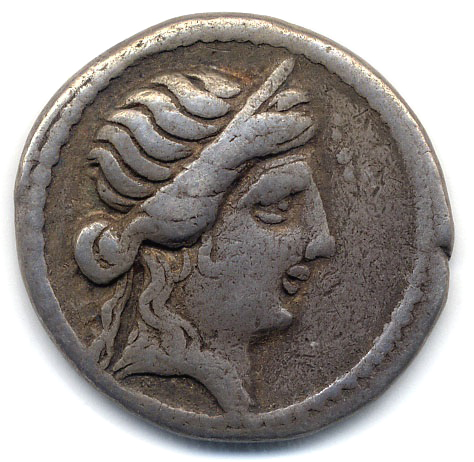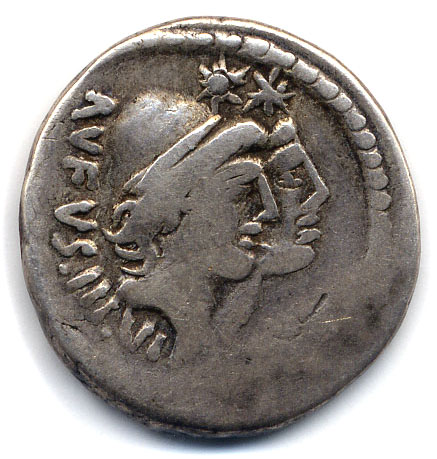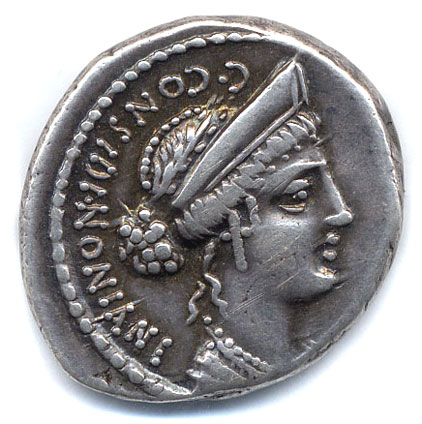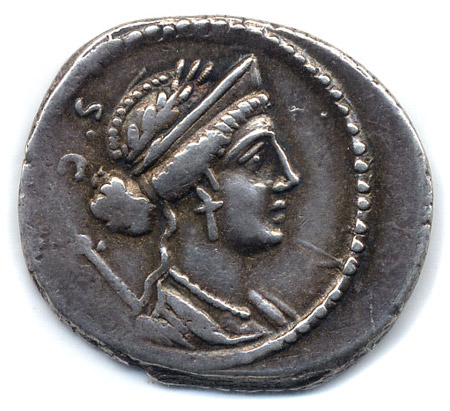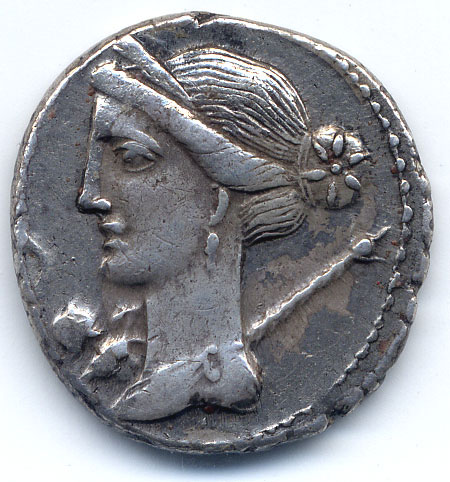Caesar's Divine Heritage and the Battle for Venus
Throughout his career Caesar claimed the special protection and assistance of the goddess Venus. The connection between the Julian family and the goddess was long established, and previous members of the gens had struck coinage showing the goddess (e.g. RRC 258/1, 320/1). At the funeral of his aunt in 69 BC Caesar publicly proclaimed his relationship to Venus and his descent from Aeneas. (Suetonius Div. Iul. 6)
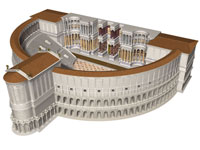
Caesar's special patronage of the goddess continued throughout his life. He claimed the goddess' protection in his battle against Pompey at Pharsalus in 48 BC, vowing to build a temple to Venus if he was victorious (Appian 2.10.68). Caesar built a temple to Venus Genetrix (Venus 'the Mother') in the forum Iulium (Julian Forum) - though whether this was to commemorate his victory at Pharsalus remains unclear. The statue of Venus Genetrix in this temple showed the goddess holding an apple in her left hand and moving to cover her head with her right hand. This statue type was reproduced on later coins (e.g. RIC Sabina 396). Suetonius Div. Iul. 84 records that a shrine in the image of this temple was placed on the rostra at Caesar's funeral.
Pompey also professed the support of Venus. Sulla had claimed the favour of Venus (his agnomen 'Epaphroditus' means 'favoured by Venus'), and Pompey, as the son-in-law of Sulla, also claimed to have inherited the support of the goddess. A temple of Venus Victrix (Venus 'the Conqueror') was incorporated into Pompey's theatre (Rawson 1970).

Both Pompey and Caesar vied for Venus' support during the civil war. This contest for divine assistance is perhaps best brought out in the battle of Pharsalus. Pompey and Caesar each promised dedications to the temple of Venus Victrix if they were successful (Plutarch Pompey 68.2, Appian 2.10.6). Plutarch notes Pompey's fear of Caesar's superior claim to the goddess: "he feared lest the race of Caesar, which went back to Venus, was to receive glory and splendour through him" (Pompey 68.2).
Despite the fact that Caesar proclaimed his connection with Venus in 69 BC, this link was not advertised on coinage until 47/46 BC, the year after Pompey's death. In this year Caesar (minting coins in Africa) released the second largest issue of his career (RRC 458/1), a coin with the head of Venus on the obverse and an image of Aeneas on the reverse, carrying the palladium in his right hand and his father Anchises on his shoulder. It is a powerful allusion to Caesar's claim of descent from Venus and Aeneas and to the support of Venus that Caesar received in his battles against Pompey.

After 47/46 BC monetales in Rome also included Venus on their coinage (RRC 463/1, 463/3, 463/5, 463/6, 468/1, 468/2). An example are the coins of Mn. Cordius Rufus, who struck coins at Rome in 46 BC. A large proportion of his coinage focuses on Venus, particularly Venus Victrix (RRC 463/5, RRC 463/6) and Venus Genetrix. One particular issue (RRC 463/1) shows Venus with cupid perched on her shoulder. This image might be taken from a statue placed in the temple of Venus Genetrix. The temple was completed in 46 BC, the year that the coin was issued. Venus only acquired the epithet Genetrix or 'mother' under Caesar.
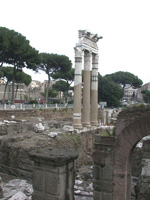
Pompey's relationship to Venus is also reflected on coinage issued by moneyers who supported his cause. C. Considius Nonianus struck a coin in 57 BC (RRC 424/1) showing Venus and the Roman Temple of Venus Erycina, a Roman temple erected to Venus/Aphrodite during the Second Punic War. Sulla had especially favoured this particular aspect of Venus (Epaphroditus) and Crawford (1974: 448) sees this coin as a declaration of the moneyer's support for the Pompeian faction. Pompey's lieutenant and future son-in-law Faustus Cornelius Sulla struck a coin in 56 BC connecting Pompey with Venus (RRC 426/3). The obverse of the coin shows Venus, while the reverse displays three trophies, reflecting Pompey's three triumphs (for these triumphs see Dio 42.18.3).

